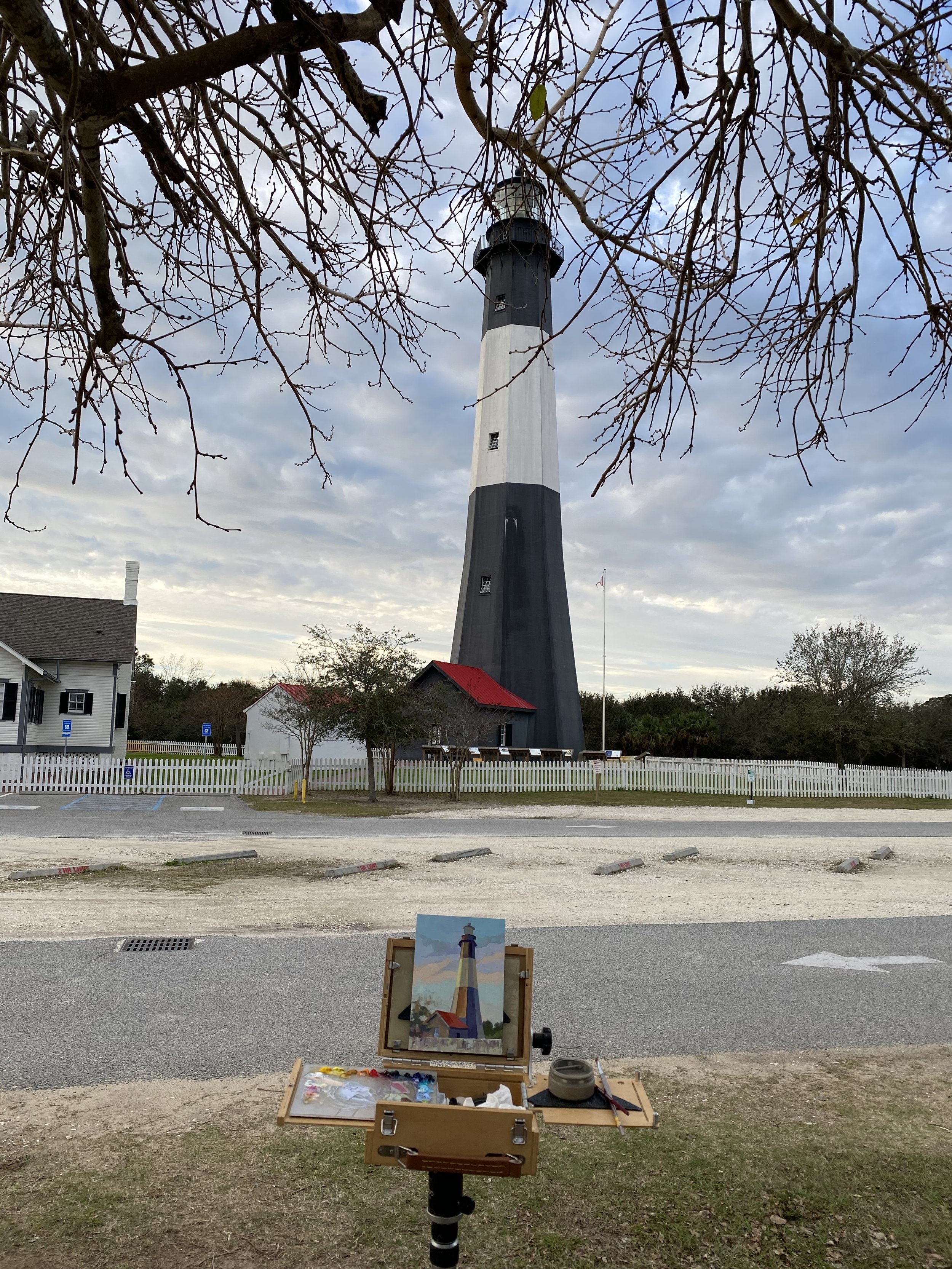#156: Building a Lighthouse on Tybee Island
["[Tybee Island] is a place so exceedingly pestered with mosquitoes, by reason of the adjacent marshes, that no person would ever be fond of taking his abode there."
—William Stephens
Building a Lighthouse on Tybee Island
In 1733, Georgia Colony founder James Oglethorpe decided that Tybee Island was the place to establish the first beacon to help guide incoming ships upriver to the new outpost established in Savannah. The Tybee Beacon was prefabricated in Savannah, then carried downriver to Tybee Island to be assembled.
William Blitheman, the master carpenter selected by Oglethorpe for the task, had only recently arrived from London on the Georgia Pink. He planned to settle on Tybee Island, along with ten other families, after Oglethorpe granted each family 50-acre lots. But the area marshes were filled with mosquitoes and disease. Many on the island died, and construction of the Tybee Beacon slowed to a crawl.
When Oglethorpe revisited the island after returning from England in early 1736, he was angry at the lack of progress and threatened to hang the chief carpenter for dereliction of duty. Oglethorpe's death threat never got carried out but immediately and rapidly pushed the project forward. As a result, the first lighthouse on Tybee Island, built with wood harvested nearby, was completed that Spring.
Unfortunately, more death and destruction followed. Survival on Tybee was no picnic. By Fall 1737, the island became deserted, and death — thought today caused primarily by malaria, but back then blamed on the overconsumption of rum — was all too common. Navigating the treacherous channels of the Savannah River was difficult to even for the best sailors, and the harsh Atlantic Ocean winds and the hot and humid weather soon brought the lighthouse to a condition beyond repair. It collapsed in 1741.
William Stephens, appointed by the Georgia Trustees, soon began and completed a second lighthouse project. This beacon on Tybee would serve the area until 1754, when the Georgia Trustees surrendered their charter to the Crown of England, and the first Georgia Assembly met in Savannah. Building a third lighthouse became a top colonial priority but would not be completed until 1773.
Only four years later, British naval and military forces used the lighthouse as a rallying point to control Savannah during the Revolutionary War. Both the Volunteers of Saint-Domingue led by Charles Henry Hector d'Estaing (see PFS-50) and cavalry forces under Polish Nobleman Casimir Pulaski (see PFS-68) initially gathered on Tybee before setting off to mutual defeats in the Second Battle of Savannah.
After the American Revolution, the colony of Georgia transferred ownership of the Tybee Lighthouse to the new Federal government. And in the 1790s, the lighthouse was for the first time permanently illuminated, first by spermaceti whale oils and later using lard. Technological improvements brought more value to the Tybee Lighthouse, just in time for service as an early warning system during the War of 1812. Fresnel lenses were added in the 1850s.
Early in the Civil War, in November 1861, Confederate forces stationed at Fort Pulaski (see PFS-151) attempted to set fire to the Tybee Lighthouse to keep it from Union control. Pulaski Commander Charles Olmstead ordered J.B. Reed, Captain of the Irish Volunteers, to burn the structure to the ground. However, the brick tower remained standing, and the Stars and Stripes would ultimately fly over the Tybee Lighthouse for the remainder of the war. Fort Pulaski would soon fall to cannon fire from Tybee.
The lighthouse on Tybee would change under the winds of war and advancements in maritime technology. In 2002, it became the first lighthouse in America deeded under the National Historic Lighthouse Preservation Act. The National Park Service thereby handed the Lighthouse on Tybee Island to the Tybee Island Historical Society for safekeeping. Today, you can still climb the 178 cast-iron steps to look over the island and watch massive ships heading up the Savannah River to the busy port.



